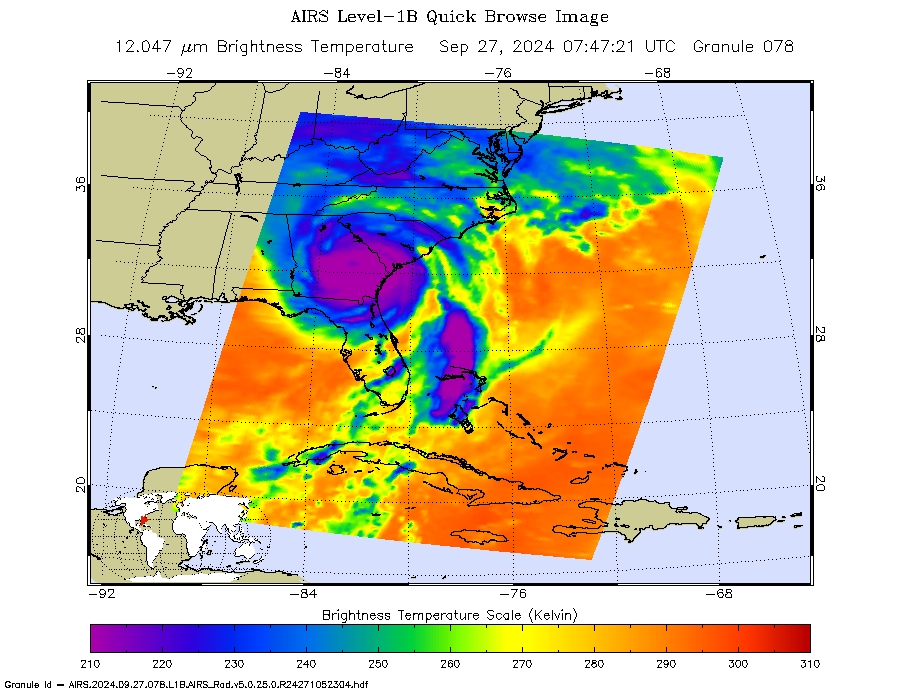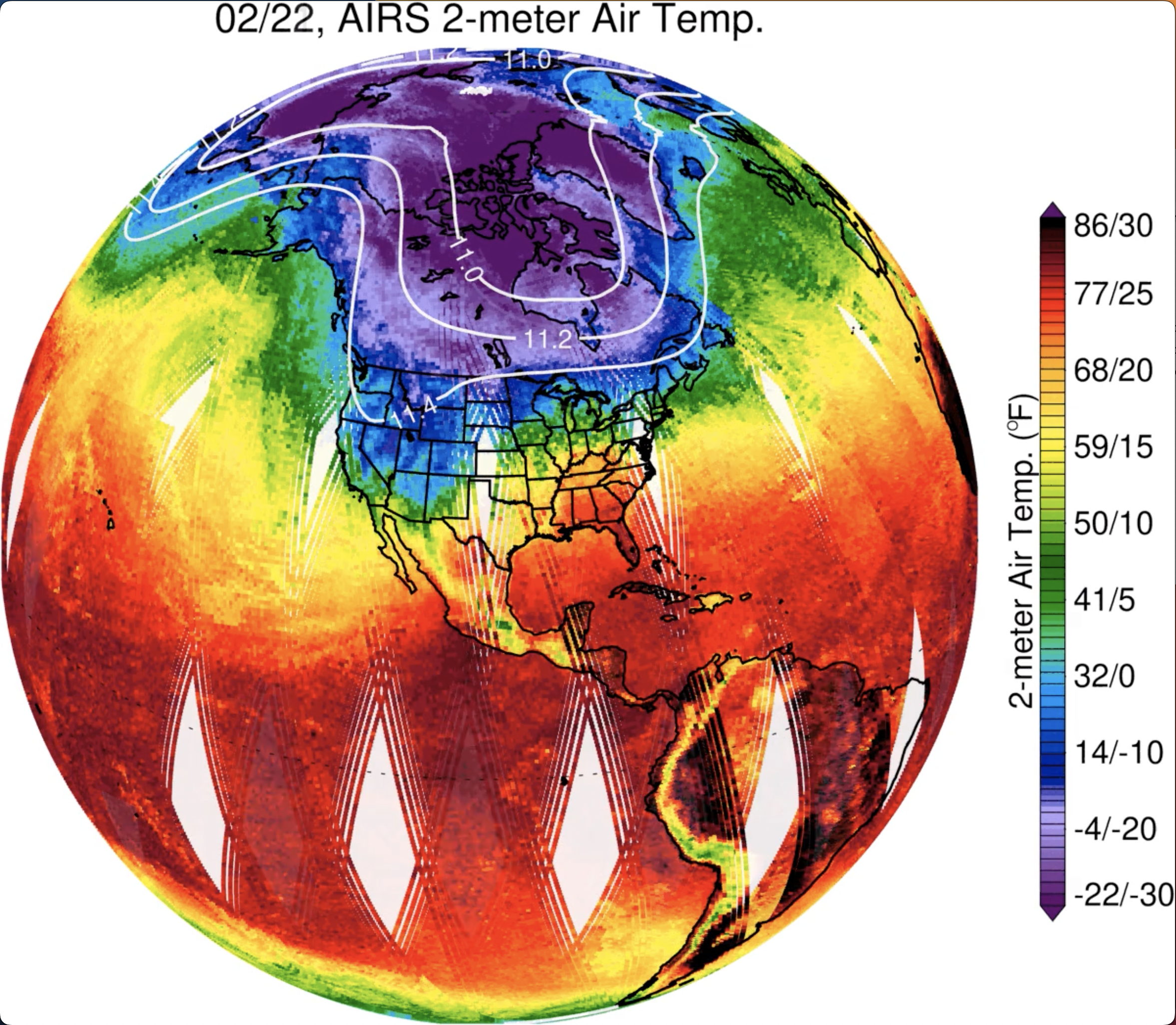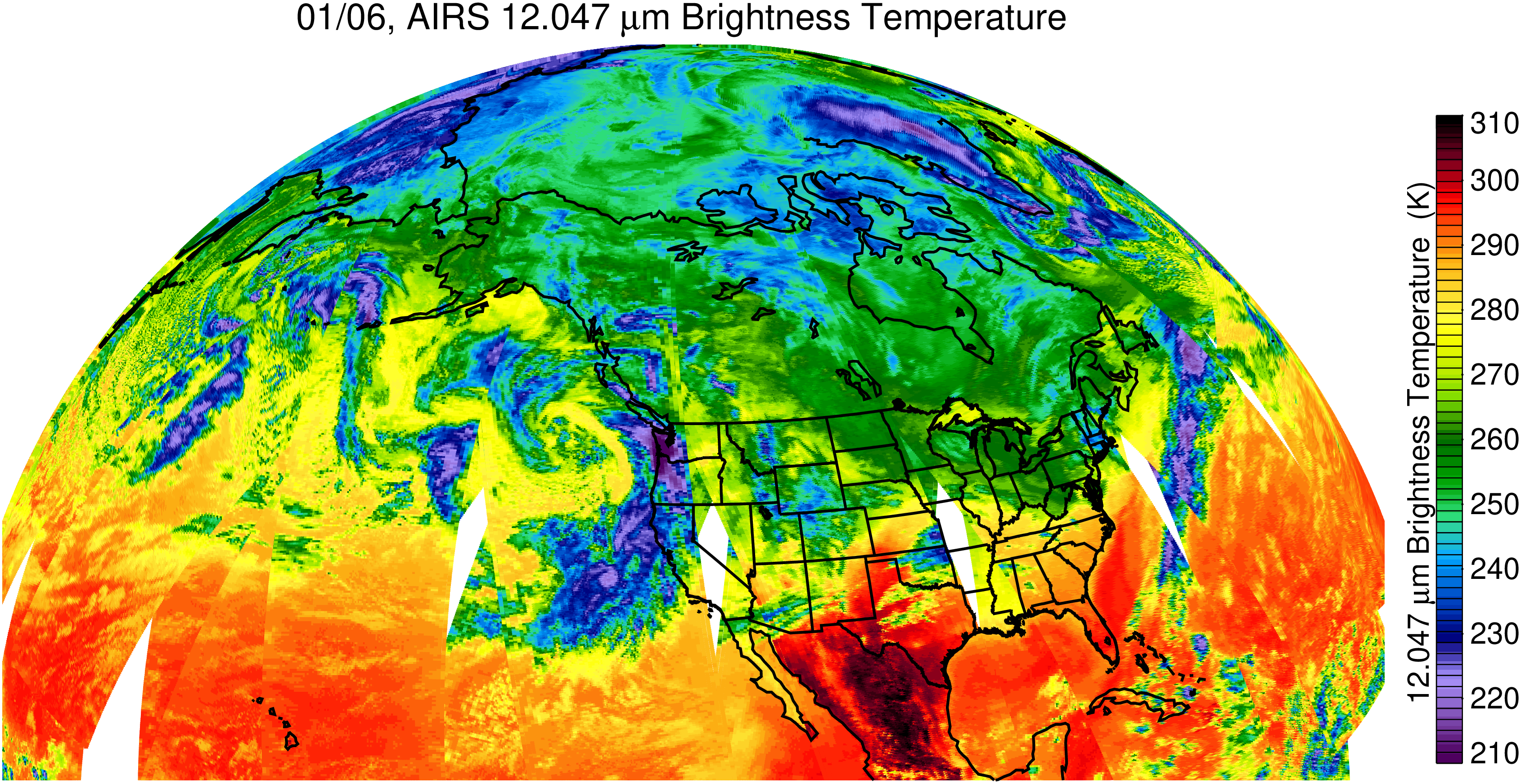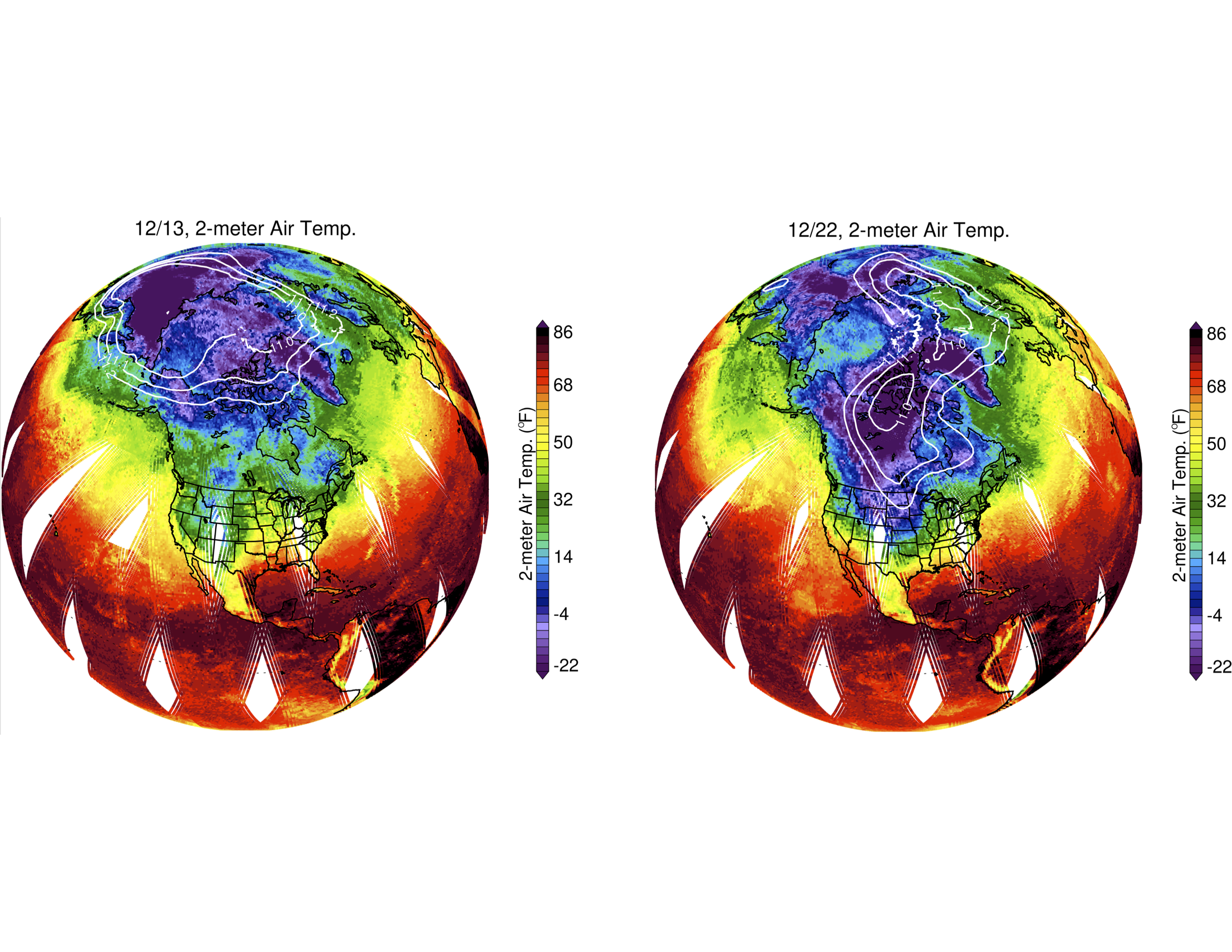News | July 3, 2012
Your paper, three questions: Observed Land–Atmosphere Coupling from Satellite Remote Sensing and Reanalysis
Research hydrologist Craig Ferguson describes his effort to explore the role that local surface soil moisture anomalies play in triggering warm season convective rainfall
We used AIRS to produce the first observationally-based quantifications of the land-atmosphere interaction at regional to global scales. The results are now being used to evaluate the realism of model-based findings, like those of the GEWEX Global Land-Atmosphere Coupling Experiment.
What is your paper about?
Our research involved using data from the AIRS instrument to improve our understanding of the role that local surface soil moisture anomalies, via their effect on partitioning surface turbulent fluxes, play in the triggering, enhancement, or suppression of rainfall (hereafter, coupling).
In previous modeling experiments, such as the GEWEX Global Land-Atmosphere Coupling Experiment (GLACE), the sign and strength of land-atmosphere coupling had been shown to vary widely. Due to a lack of observations, there was no sense of the coupling realism, especially beyond field-scale observations.
Based on the earlier framework of Kirsten Findell and Elfatih Eltahir in 2003, we knew that two derived atmospheric quantities, the convective triggering potential (CTP) and the low-level humidity index (HI), taken collectively, could describe a region's predominant coupling regime, at least over the contiguous United States. We realized that these same quantities, which Findell and Eltahir had obtained from raobs, were derivable from AIRS soundings and importantly, Aqua's 0130 LT overpass satisfied their framework's early-morning observation (i.e., prior to the early-morning degradation of the nocturnal stable layer) requirement.
Using a 7-year record of AIRS data spanning 2002-2009, we successfully generalized the CTP-HI classification framework of Findell and Eltahir for global application. The result was the first ever global observation-based map of prevailing convective regimes.
In order to appease any skeptics of the AIRS data quality, the analysis was duplicated using output from the NASA Modern Era Retrospective Analysis for Research Applications (MERRA). Actually, both AIRS and MERRA CTP and HI required validation prior to the coupling analyses, which we completed using raobs from more than 250 and 444 sites globally for AIRS and MERRA, respectively.
What did your research reveal?
Our research produced a global map of the dominant coupling regimes between 2002 and 2009 that may be used to evaluate model-based findings. The map could also be used to direct future detailed process studies, or to site and schedule event-scale observational campaigns. For example, northern Europe, the eastern United States, and southeastern Asia were identified as regions with atmospheric conditions that typically favor convection over wet soils. Conversely, Arizona, northern Mexico, central Asia, and Tibet were singled out as regions with atmospheric conditions that typically favor convection over dry soils.
Among the GLACE coupling 'hotspots' (i.e., the central Great Plains, West Africa, and India) both AIRS and MERRA-based results yielded a substantial fractional coverage of atmospherically-controlled area. This finding suggests that the role of advection is an important missing link in our study and needs to be addressed in the future.
Overall, our paper underscores the value of NASA Aqua to the hydrological sciences. Aqua, and specifically AIRS, enabled us to overcome the data limitations that constrained the earlier work of Findell and Eltahir. Although not directly implemented in the CTP-HI classification framework, we also applied the following Aqua-dependent products in our paper: AMSR-E rain rate and rain type, AMSR-E microwave soil moisture, and the U.S. Climate Prediction Center (CPC) morphing (CMORPH) rainfall. Combined with AIRS CTP and HI, the CMORPH rainfall helped show that the real-life CTP-HI thresholds for rainfall are latitudinally varying.
Through a conditional probability analysis, we demonstrated potential in some cases for CTP and HI to be useful for forecasting initial soil moisture (AMSR-E) and/or subsequent rainfall occurrence and depth (CMORPH). These are a few of the many applications for Aqua-based products with high potential scientific and societal payoff.
Of course, both remote sensing and reanalyses still have their uncertainties. These will only be ameliorated through additional in-situ observations in data scarce regions and continued retrieval algorithm development and/or calibration.
What part of your research do you consider to be the most significant?
This paper provides the first observation-based estimates of land-atmosphere coupling at regional-to-global scales. That, by far, is its greatest contribution.
Second to this feat, the paper is significant because it is fully comprehensive. We applied AIRS and MERRA datasets and validated them both globally. There are uncertainties in both datasets, which we do not attempt to minimize or downplay. The heterogeneity in the global maps of coupling could be due in part to these uncertainties, or the skill of the classification scheme, but much is likely real--a function of the complexity of the coupling process. In some regards, the paper may be viewed as a model for advancing pre-satellite era frameworks with contemporary remote sensing data.
Abstract of "Observed Land–Atmosphere Coupling from Satellite Remote Sensing and Reanalysis"
The lack of observational data for use in evaluating the realism of model-based land--atmosphere feedback signal and strength has been deemed a major obstacle to future improvements to seasonal weather prediction by the Global Land-Atmosphere Coupling Experiment (GLACE). To address this need, a 7-yr (2002--09) satellite remote sensing data record is exploited to produce for the first time global maps of predominant coupling signals. Specifically, a previously implemented convective triggering potential (CTP)--humidity index (HI) framework for describing atmospheric controls on soil moisture--rainfall feedbacks is revisited and generalized for global application using CTP and HI from the Atmospheric Infrared Sounder (AIRS), soil moisture from the Advanced Microwave Scanning Radiometer for Earth Observing System (EOS) (AMSR-E), and the U.S. Climate Prediction Center (CPC) merged satellite rainfall product (CMORPH). Based on observations taken during an AMSR-E-derived convective rainfall season, the global land area is categorized into four convective regimes: 1) those with atmospheric conditions favoring deep convection over wet soils, 2) those with atmospheric conditions favoring deep convection over dry soils, 3) those with atmospheric conditions that suppress convection over any land surface, and 4) those with atmospheric conditions that support convection over any land surface. Classification maps are produced using both the original and modified frameworks, and later contrasted with similarly derived maps using inputs from the National Aeronautics and Space Administration (NASA) Modern Era Retrospective Analysis for Research and Applications (MERRA). Both AIRS and MERRA datasets of CTP and HI are validated using radiosonde observations. The combinations of methods and data sources employed in this study enable evaluation of not only the sensitivity of the classification schemes themselves to their inputs, but also the uncertainty in the resultant classification maps. The findings are summarized for 20 climatic regions and three GLACE coupling hot spots, as well as zonally and globally. Globally, of the four-class scheme, regions for which convection is favored over wet and dry soils accounted for the greatest and least extent, respectively. Despite vast differences among the maps, many geographically large regions of concurrence exist. Through its ability to compensate for the latitudinally varying CTP--HI--rainfall tendency characteristics observed in this study, the revised classification framework overcomes limitations of the original framework. By identifying regions where coupling persists using satellite remote sensing this study provides the first observationally based guidance for future spatially and temporally focused studies of land--atmosphere interactions. Joint distributions of CTP and HI and soil moisture, rainfall occurrence, and depth demonstrate the relevance of CTP and HI in coupling studies and their potential value in future model evaluation, rainfall forecast, and/or hydrologic consistency applications.






